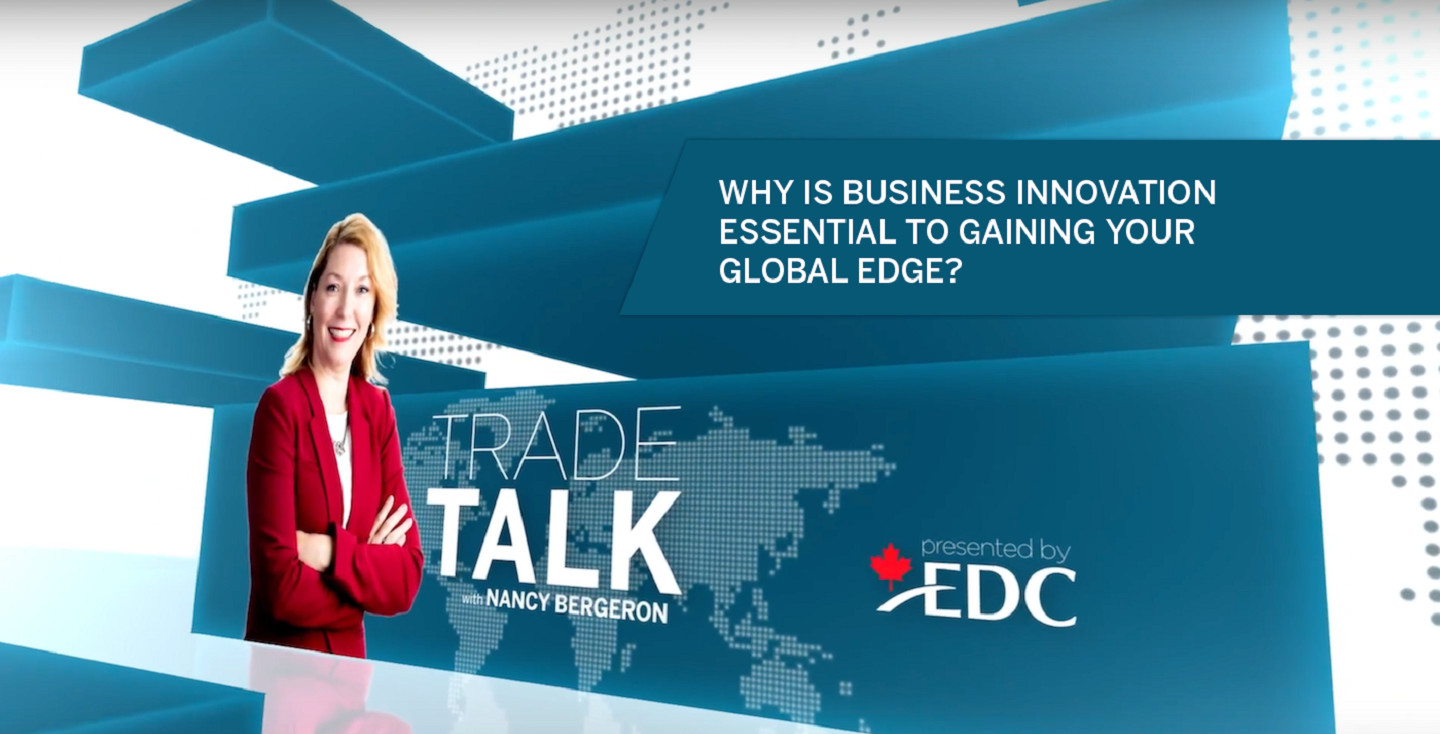Innovation is a term thrown around a lot in business circles these days, but it’s often misunderstood. Innovation isn’t the same as invention, and it’s not only for high tech companies. At its core, innovation is about creating new value for the customer. It could be a process, a service, a product, an upgrade or even a business model. But it relies on coming up with a new way of solving a problem for your customer.
Consider the importance of listening to customers in today’s economy:
- Consumers and clients are more demanding than ever, with the expectation that companies will continually adapt, improve or create new products and services to meet their needs.
- E-commerce has come to dominate retail and business-to-business (B2B) transactions, which gives customers limitless choice.
- Free trade agreements have increased the mobility of goods, people and services making business competition borderless.
Innovation can be about incremental improvements
Innovation, done right, is customer-centric. When companies put customers at the centre of their growth strategies, they’re seeking input, listening and responding to what customers want or need.
“Incremental innovation is when you improve upon what is already in market,” says Andrew Maxwell, an entrepreneurial engineering professor and Chief Innovation Officer of the Canadian Innovation Centre. “It may be offering a new level of performance, an upgrade to technology or a better process.”
If you’re established in a market, incremental innovation will always give you an edge over companies that stagnate, because it demonstrates that you’re listening to your customers.
Keep in mind, says Maxwell, that customers don’t always know what they need. Sometimes they do, but they can’t articulate it. It’s the innovator’s job to figure out the need, how to respond to it and how to communicate it to buyers.
Why innovation can help you break into new markets
Developing innovative capabilities can also help you carve out a position for yourself when entering the market for the first time, growing into the U.S. or selling internationally.
“A new company always has what theorist Arthur Stinchcombe, in 1965, coined ‘the liability of newness,’” says Maxwell. “They don’t have the reputation or connections of established firms, nor the guarantee they’ll be around for the long term. This makes it very difficult for them to take on existing players.”
Adopting an innovation mindset can create a focus for new entrants in the market to create a competitive edge.
“If you’re a new company, or you’re selling internationally for the first time, it will be a lot easier to grow your business, attract resources and develop the partnerships you need to succeed if you’re offering something that is truly unique and valuable for customers,” he says.
Customers generally prefer to stick with what they know rather than risk going with something new or unproven. But what happens if you don’t have to force them to choose between you and an established firm?
“If you can create a product or service that’s unique, something the customer can’t find anywhere else, then you’re no longer competing with the established players,” says Maxwell. “Instead, you’re creating a brand new marketplace where you can dominate.”
When customers see they can’t get what you’re offering anywhere else, they’re not choosing between you and the established player; they’re choosing between you or nothing.
“What all new entrants to a market need to do is change customer behaviour and that’s not easy,” says Maxwell. “If you have a truly unique value proposition to offer the customer, changing their existing behaviour becomes a lot easier.”
While innovation always keeps the end user in mind, it also considers who will be buying the product on the user’s behalf. Sometimes it’s a single consumer. But in B2B transactions, the buyer is often someone quite different from the user.
When determining how best to innovate, successful companies think about the buyer role strategically, says Maxwell.
Market research can help you identify overall trends where you’re selling your product or service. But developing a successful innovation strategy requires you dive a little deeper.
“Understanding your buyer allows you to predict with greater accuracy the enablers and hurdles you’ll encounter as you try to get your innovation to market,” he says.
A best practice innovation sales strategy demands thinking about the individuals who will influence the purchase of your innovation, both those who will be advocates and those who may be blockers.
“Your end user may be someone in the IT arm of an organization, but they may not have much influence over who buys tools for the IT department,” says Maxwell.
“A good innovation sales strategy needs to identify who, specifically, can influence that buying decision. More importantly, who may become a hurdle in that range of influence? Often health and safety, risk managers, CEOs or people with friends in competing companies may try to block the buying decision. Your innovation strategy will account for that.”
It’s easier to identify those influencers than you may think. Often it requires a simple phone call to the user in the company who wants your product and they give you the individual names of people within their company that have authority or sway over purchasing decisions.
“This is strategic selling,” says Maxwell. “It works for all kinds of products. But particularly if you’re breaking into market with a new value proposition, you don’t want to waste time talking to the wrong people.”
Innovation can be cost effective
The old view of the world is that if you make a better product people will buy it.
“That ignores everything we know about behavioural economics, which is that people will make easy decisions over hard decisions,” says Maxwell.
In reality, he says, many innovations today are about making a cheaper, more accessible product or service. This means small, agile companies have as much chance as creating a competitive advantage through innovation as do large companies or market leaders.
Companies that have an innovation strategy in place have a plan to get their first customer. But they also have their growth plans outlined.
“Ideally, your first customer will be a smaller company, a customer that can make a quick decision,” says Maxwell. “As soon as you have that first customer, start collecting information from that you can bring to your next client.”
This may include having case studies or success stories, improving the product or service based on initial feedback from client number one and understanding clearly how that first client will lead you to your second and then your third.
Feedback consideration in your innovation strategy may include demonstrating how it’s working, if it’s delivering what’s promised, if the warranties are up to scratch.
“It’s important that companies write their own success stories so they can use that to scale,” says Maxwell. “This is part of a good innovation strategy.”
“Inherently, if you’re going into an international market, you have to have some level of disruption because you’re a new player,” says Maxwell.
But it doesn’t always mean changing your product or technology Often, it demands a new approach to doing business.
“Financing is often a huge barrier for your buyers,” says Maxwell. “Can you offer clients an innovative financing solution that will make it easier for them to purchase?”
The first company Maxwell started makes solvent distillation equipment to recycle used solvent, a product found in most printing plants in Canada.
“When we went into the U.S., we encountered a number of hurdles – from geography to general reluctance to spend money on an untested product from an unknown company,” he says.
Maxwell solved the problem by changing his business model. First, he found a network of local dealers in the U.S. that would give local buyers confidence. But he also developed an innovative financing package, where U.S. buyers were able to purchase the product out of the savings they made from not having to haul away waste solvent, and from not needing to buy so much new solvent.
“More and more we’re seeing business innovation play out in this way,” says Maxwell. “It’s not all about technology, but about how you’re getting to market, who your partners and creative financing terms. All of these things are tied up in your innovation strategy that will help you compete.”







